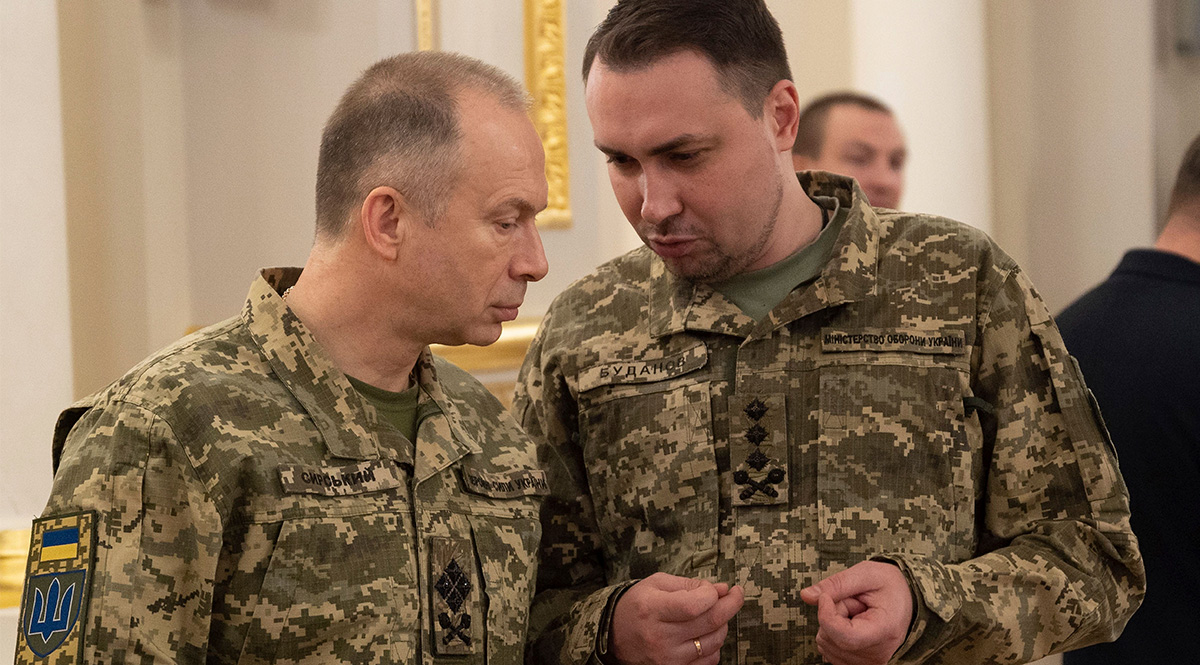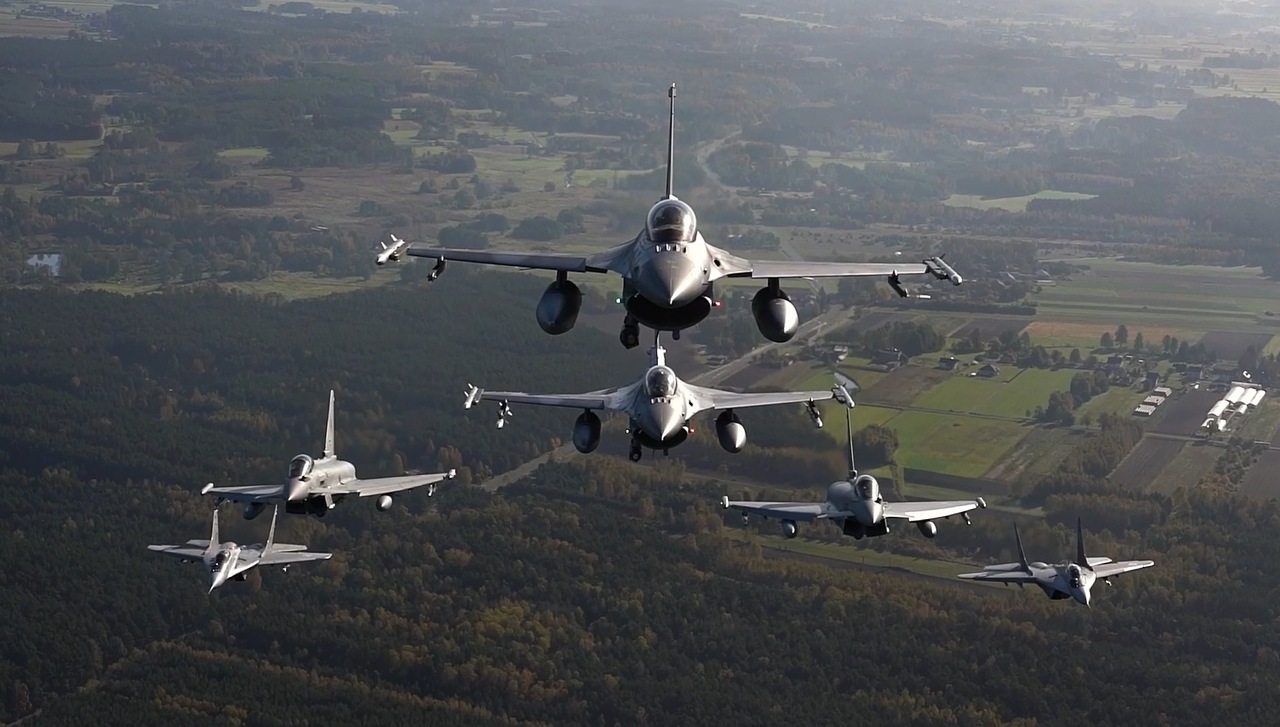Ukraine Focuses on "Active Defence" Strategy
In recent months, Ukrainian high-ranking commanders presented in public the main assumptions of the country’s “active defence” strategy. These assume holding the current frontline with parallel strikes on the deep rear of the aggressor. However, some of the more ambitious goals and means to achieve them might be problematic for the U.S. administration, which is paralysed by internal politics and various regional crises. Ukraine’s strategy aims could be complemented by buying artillery ammunition outside Europe and the U.S. and cooperation between the Ukrainian and western defence industries.
 Pool /Ukrainian Presidentia / Zuma Press / Forum
Pool /Ukrainian Presidentia / Zuma Press / Forum
Since November 2023, a series of publications and interviews by Ukrainian top commanders has been published that include recommendations for its “active defence” approach. Similar conclusions were presented in a widely discussed report by the Ministry of Defence of Estonia (published last December), and, according to media, approval of this strategy was the main topic of a meeting between the U.S. and Ukraine delegations at Davos in January 2024. Although details of Ukraine’s operational plans are classified, the published materials present the broad strokes of the main assumptions, issues, and needs of this strategy.
Risk of Stagnation and Positional Warfare
Contrary to hopes based on Ukraine’s success in the first year after Russia’s full-scale invasion, the following year, 2023, did not result in a military breakthrough in the war with the aggressor. The Armed Forces of Ukraine (AFU) have made little territorial progress, with likely high human and materiel losses and struggles in a few directions of the counter-offensive, along with gaps in equipment and training of troops and well-prepared Russian defence lines. At the same time, Russia has been conducting yet another set of local offensive with record causalities among its troops—since 24 February 2022 until the end of 2023 as many as 320,000 have been killed or wounded (U.S. intelligence estimate). With many adaptations of tactics, Russia has not abandoned its strategic ambition to subordinate Ukraine or its operational goals that include control of four Ukrainian districts illegally annexed in autumn 2022. Ukraine, in turn, has not abandoned its declared strategic goal of liberating all occupied areas, including Crimea.
Limitations facing both belligerents are forcing them into positional and attritional warfare, which might result in stalemate or, in the worst case for Ukraine, some breaches in the 1,200-km frontline. Russia is using its advantage in artillery firepower (4 or 5:1) and capability to target the whole of Ukraine with missiles, drones, and airplanes from long distances. Other trends on the battlefield until recently favoured Ukraine, especially in the “kill ratio” of armoured vehicles (Russia’s losses are visually confirmed at 14,000). Despite multiple increases in the production of ammunition, drones, and missiles, Russia is still depending on recovered Soviet weapon reserves, military assistance from Belarus, North Korea, and Iran, as well as dual-use technologies and materiel from China. These are pressing challenges for Ukraine, which is constantly contending with gaps in personnel, ammunition, and air-defence systems, while dealing with growing uncertainty regarding previously promised military assistance from the U.S.
Elements of Ukraine’s New Strategy
Lessons learned during summer 2023’s counter-offensive resulted in proposals for a change in Ukraine’s operational goals, collectively called “active defence”. Revealed so far by the AFU’s high command are proposals that assume a focus on maintaining the lines of defence and further degrading Russian troops and arsenals. In parallel, Ukraine wants to continue deep strikes on logistic hubs of the occupation forces, successful campaign against units of the Black Sea Fleet, as well as an escalation of drone, sabotage, and diversion raids within Russia. Active defence takes into account not only the limits of the AFU but also the weaker points on the Russian side. In this strategic calculus, a second “partial mobilisation” of reservists by Russia after the presidential “elections” in March is expected, as is a reconstitution of the AFU’s capabilities for a counter-offensive in 2025.
Ukraine’s “active defence” strategy foresees the reorganisation of the AFU, more time on training and unit cohesion, with full front-unit rotations due to the fact that many important sections of the front are still manned by veterans of two years’ of intense warfare. The need to mobilise about 450,000-500,000 younger recruits is a hotly-debated political issue in Kyiv and one of reasons for the change of higher-rank commanders by the president of Ukraine. There is uncertainty if Volodymyr Zelensky’s reluctance so far to activate this level of mobilisation will recede with the promotion of Gen. Oleksandr Syrskyi, who previously presented opinions similar to the dismissed Gen. Valerii Zaluzhnyi on the need for more troops. It is clear that without the mobilisation of these reserves and changes in their training, the AFU risks further physical and morale exhaustion of infantry units and a reduction in their combat readiness, even for purely defensive operations.
The “active defence” strategy is also based on a new approach regarding non-military means. An important element is maintaining the resilience of the economy through guaranteed security of grain export and industrial export via the Black Sea ports of Ukraine. The capabilities of the economy are also of great interest for its key partners within the EU, where many countries are witnessing growing social tensions with farmers. Another element of the Ukraine’s new strategy is the reconstruction of the domestic industry’s potential and production for the AFU, chiefly to reduce the scale of dependency on military assistance from the U.S. and EU. Ukraine’s priorities are obviously on ammunition and different types of drones and electronic warfare systems. At the same time, it will continue its efforts to cooperate on Ukrainian territory with arms producers from the U.S. and EU. These steps could help Ukraine become more resilient to changes in the policies of its main partners. Some industrial agreements already signed by Ukraine suggest huge potential in this area; however, even full implementation needs time and will not eliminate dependency on Western assistance in 2024. Ukraine’s urgent needs still consist of increased deliveries of ammunition and spare parts for artillery, reconstitution of its air force and multi-layered air defences, and offensive capabilities to reach targets at long ranges. The focus on the AFU’s defensive operations requires additional deliveries of cluster and thermobaric munitions, anti-tank mines and missiles, as well as engineering equipment to augment lines of defence.
Challenges to Ukraine and Its Partners
The “active defence” strategy seems to be optimal in the current situation and might gain the support of the Biden administration in the U.S., which still declares an interest in Russia’s “strategic failure” in Ukraine and the latter regaining all occupied territories. The U.S. strategy again presents its principal position as maintaining the territorial integrity of Ukraine and a lack of basis for peace negotiations with Russia. However, right now the main challenges are the uncertainty in the U.S. Congress for financing assistance to Ukraine and the possible change of American policy if Donald Trump is elected again in November 2024 (in power from January 2025). This latter, worst-case scenario would practically cancel all projects promoted by the U.S. within the G-7 and other multilateral and bilateral frameworks for cooperation for security and the economic reconstruction of Ukraine. Moreover, Ukraine, even with a positive commitment from Republicans in Congress will still need more strategic clarity from the U.S. This includes a vision for a political-military end of the war and prospects for Ukraine’s membership in NATO. The lack of U.S. clarity on these issues stands now in stark contrast to the EU-Ukraine negotiations, which are positive motivation for both Ukrainian elites and society.
More than strategic issues in the U.S.-Ukraine dialogue might be difficult on some of the desired and accepted operational goals of the AFU in the “active defence” concept. According to leaks to media, the Biden administration is in favour of Ukraine’s approach to the needs of the AFU, augmenting its domestic defence industry, and securing export routes in the Black Sea. The White House is allegedly also in favour of the mobilisation of Ukrainian reserves and keeping the economy functioning, as well as long-term cooperation within a few smaller and functional coalitions, such as partnerships for air defence or the air force. However, leaked parts of the American documents are unclear about the U.S. approach to proposed escalations of asymmetrical operations against or within Russia, future counter-offensives, and on strengthening the AFU’s offensive projection capabilities (for instance, the delivery of long-range strike missiles).
Conclusion
Ukraine’s assumptions in its “active defence” strategy reflect the positive experience of 2022 and the lack of success in the counter offensive of 2023. This concept seems to achieve a much better balance between Ukraine’s goals, challenges, available troops, and weapons and the aims and capacity of its partners. The main challenge to its implementation is the decision-making paralysis in the U.S. in the area of military assistance and the potential of a Trump presidency, with both scenarios requiring much higher demands on Europeans. The latest change to the AFU’s top commanders may not significantly change the “active defence” concept, which was co-authored by Gen. Syrskyi. In Ukraine, the need for further mass mobilisation and training of personnel before Russia takes similar steps seems to be controversial. Closely connected to the mobilisation of new troops is consistent reviews and necessary changes to the AFU training system, in particular to the ongoing programmes led by Ukraine’s partners, and that reflect all lessons learned and real requirements of the battlefield, seemingly forgotten at times. Regardless of the fulfilment of previous obligations concerning ammunition and weapons, Ukraine’s European partners should promote the diversification of sources of arms supplies. Urgent priority should be given to buying ammunition for the AFU from outside Europe and the U.S. (until increased production yields results) and to direct cooperation between Western companies and the Ukrainian defence industry. For now, the European partners should also abolish political and legal restrictions limiting or preventing deliveries of offensive missiles (like the German Taurus), combat drones, electronic warfare means, mines, and cluster and thermobaric munitions.



.jpg)
.jpg)
